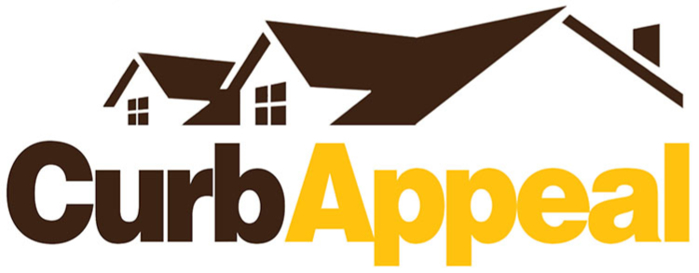Image: WavebreakmediaMicro - Adobestock
 The coronavirus pandemic has had a significant impact on the housing market, with social distancing lockdowns disrupting home sales in most states from mid-March through April. However, the pandemic is not deterring some buyers; according to the National Association of Realtors (NAR), first-time buyers accounted for 36% of all sales in April, up from 34% a month earlier. According to the NAR "2019 Profile of Home Buyers and Sellers," first-time buyers were responsible for 33% of all sales in 2019. Individual investors and second-home buyers—two groups who typically account for cash sales—also saw potential in the market, purchasing 10% of all homes sold in April.
The coronavirus pandemic has had a significant impact on the housing market, with social distancing lockdowns disrupting home sales in most states from mid-March through April. However, the pandemic is not deterring some buyers; according to the National Association of Realtors (NAR), first-time buyers accounted for 36% of all sales in April, up from 34% a month earlier. According to the NAR "2019 Profile of Home Buyers and Sellers," first-time buyers were responsible for 33% of all sales in 2019. Individual investors and second-home buyers—two groups who typically account for cash sales—also saw potential in the market, purchasing 10% of all homes sold in April.
Mortgage Rates Near Historic Lows
First-time buyers are entering the housing market due in large part to advantageous mortgage rates. For the last full week in May, the 30-year fixed-rate mortgage averaged 3.15%; this is the lowest rate ever recorded in Freddie Mac’s "Mortgage Market Survey" over the past 50 years. According to Sam Khater, chief economist for Freddie Mac, "These unprecedented rates have certainly made an impact, as purchase demand rebounded from a 35% year-over-year decline in mid-April to an 8% increase as of last week—a remarkable turnaround given the sharp contraction in economic activity." He added that refinance activity remains high, and the average loan size of refinance borrowers this year has declined $70,000 due to the low mortgage rates. This indicates that a broad base of borrowers refinanced while mortgage rates were in record low territory, a situation that will ultimately benefit the economy. Despite a recent rise, mortgage rates are expected to remain at record lows; for the week ending June 4, 2020, the 30-year, fixed-rate mortgage averaged 3.18%. According to Lawrence Yun, chief economist for the NAR, record-low mortgage rates "will be the key factor driving housing demand as state economies steadily reopen. Still, more listings and increased home construction will be needed to tame price growth."
Inventory Remains Low
Although first-time buyers are active in the current housing market, they are having to contend with inventory shortages. There were 1.47 million units available for sale in April, down 1.3% from March and down a significant 19.7% from April 2019. At the current sales pace, this level of inventory would supply the housing market for only 4.1 months, up from a 3.4-month supply a month ago but down from a 4.2-month supply a year ago.
Higher Prices but Lower Sales
"The listings that are on the market are still attracting buyers and boosting home prices," according to Yun. Indeed, every sales region in the country experienced increases in median home prices. What’s more, April marked the 98th consecutive month of year-over-year price gains. Yet while prices increased, overall existing-home sales declined in April—as should be expected during a pandemic. Existing-home sales fell 22.5% month over month, which represented the largest decrease since July 2010. The average property remained available for sale for 27 days in April, down from 29 days a month ago but up from 24 days a year ago. Of all the homes sold in April, 56% remained on the market for less than a month.
Regional Breakdown
Northeast - Existing-home sales annual rate of 540,000; a decrease of 16.9% from March 2020 and 18.2% from April 2019. At $312,500, the median sales price increased 8.7% from April 2019.
Midwest - Existing-home sales annual rate of 1.10 million; a decrease of 12% from March 2020 and 8.3% from April 2019. At $229,200, the median sales price increased 9.3% from April 2019.
South - Existing-home sales annual rate of 1.88 million; a decrease of 17.9% from March 2020 and 16.8% from April 2019. At $249,400, the median sales price increased 6.4% from April 2019.
West - Existing-home sales annual rate of 810,000; a decrease of 25% from March 2020 and 27% from April 2019. At $419,300, the median sales prices increased 6.1% from April 2019.












 The coronavirus pandemic has had a significant impact on the housing market, with social distancing lockdowns disrupting home sales in most states from mid-March through April. However, the pandemic is not deterring some buyers; according to the National Association of Realtors (NAR), first-time buyers accounted for 36% of all sales in April, up from 34% a month earlier. According to the NAR "2019 Profile of Home Buyers and Sellers," first-time buyers were responsible for 33% of all sales in 2019. Individual investors and second-home buyers—two groups who typically account for cash sales—also saw potential in the market, purchasing 10% of all homes sold in April.
The coronavirus pandemic has had a significant impact on the housing market, with social distancing lockdowns disrupting home sales in most states from mid-March through April. However, the pandemic is not deterring some buyers; according to the National Association of Realtors (NAR), first-time buyers accounted for 36% of all sales in April, up from 34% a month earlier. According to the NAR "2019 Profile of Home Buyers and Sellers," first-time buyers were responsible for 33% of all sales in 2019. Individual investors and second-home buyers—two groups who typically account for cash sales—also saw potential in the market, purchasing 10% of all homes sold in April.